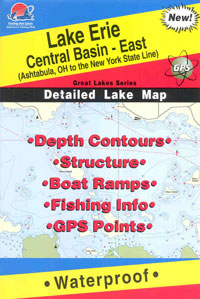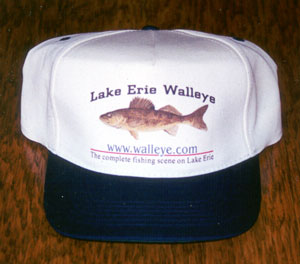|
Windows to the World
by Bill Leonard
Windows are many things to many people. They serve as a
portal to the world beyond the confines of our homes, but also as a
passageway into places that would be otherwise inaccessible. Those of us who enjoy fall sports like hunting and fishing look at
windows a little differently.
If
I look outside on a 35-degree October day when the wind is howling and sleet
 raps on the glass, I see an opportunity to bag a limit of vulnerable ducks
or geese. If I peer outside on a frosty November morning when the whitetail
bucks are rutting hard, I see an opportunity to be sitting in a tree stand
with my bow. When I drive down the road and notice the first cover of ice
capping the smaller lakes near my home, I see some of the season's best
coon-hunting. raps on the glass, I see an opportunity to bag a limit of vulnerable ducks
or geese. If I peer outside on a frosty November morning when the whitetail
bucks are rutting hard, I see an opportunity to be sitting in a tree stand
with my bow. When I drive down the road and notice the first cover of ice
capping the smaller lakes near my home, I see some of the season's best
coon-hunting.
There's a much larger window of opportunity for anglers who like to hunt
trophy walleyes. Ducks, deer and raccoons will get my attention when
conditions are right, but if the sun is shining, air temperatures are in the
40s or 50s and winds are light, chances are good that I'll be chasing big
walleyes.
Many anglers catch smaller walleyes all summer long, but they are puzzled
by the absence of the big fish they were catching in the spring. Now's the
time to get hooked up with a few of those rod-bending, double-digit piggies.
October and November offer the best big fish bite of the year. On most
bodies of water, more trophy walleyes are caught (and hopefully released)
during these two months than the rest of the year combined. The reasons are
simple. First, like all aquatic species, walleyes are putting on the feedbag
and trying to build reserves for the lethargic, cold-water months ahead.
They're storing fat and developing eggs for the spring spawn. They're out
and about, looking for the Big Macs and fries rather than a low calorie
salad.
Second, walleyes can usually be found in predictable locations and will
respond consistently to certain presentations and baits.
I start by looking at deep-water haunts for these bruisers. Depth, of
course, is relative. If the lake you typically fish is only 20 feet deep,
that's where you should start your search. If your favorite body of water
reaches down to 90 feet, zero in on the 30- to 60-foot range.
Once you've settled on a target depth, identify the primary structure in
those areas. Long, sloping points, humps, big boulders and sharp breaklines
are all features that will hold big walleyes in the fall.
From there, trust your electronics. If I see arcs at the 50-foot depth on
my Humminbird sonar unit, I fish them. If you don't, you may be missing out
on the chance at the walleye of a lifetime.
I also look for baitfish, especially when they can be found over areas of
rock and boulders. Even when no arcs are present, I've caught a lot of big
walleyes that simply avoided sonar detection by tucking into the cracks and
crevices available to them and darting out to grab a meal whenever they felt
the urge.
You can catch these fish day or night using a couple of presentations.
Slow-trolling big crankbaits or bouncing big jigs is one method that works
for daytime action. Casting and trolling stickbaits over the tops of the
decaying weedbeds or over a shallow reef is a proven nighttime presentation.
However, if I had to choose one method for catching big walleyes during
the day in October and November, it would be rigging with big creek chubs
(also known as blue chubs) and fishing them as slowly as possible.
To me, a big creek chub can be up to eight inches in length. And don't
settle for anything but the real deal. Creek chubs are not the same as
sucker chubs. Sucker chubs are sissies that may not get so much as an
interested look from a big walleye. Creek chubs are tough and energetic. And
when you position them in the presence of danger, such as the lair of a
double-digit walleye, they become even more nervous and enticing.
From a walleye's perspective, it's like a grisly, overcooked strip of
flank steak compared to a juicy filet mignon.
The value of fishing with quality creek chubs is worth whatever effort it
takes to find them. I prefer to catch them myself in local creeks, using a
pole and line. If that's not an option when some creeks begin to dry up in
the fall and I have to buy chubs, I offer to pay double the going rate to
hand-pick the ones I want.
Stock up in September or early October because not all bait dealers will
be able to stock good chubs throughout the fall, either. You can keep them
in a large, well-aerated cooler, tub or tank of well water for short-term
needs. Better yet, develop a great relationship with your local bait shop
and ask them to accommodate your chubs through the fall.
There is a knack to rigging and fishing chubs effectively.
Because I'm often fishing in rocky cover, I like to Lindy-rig my chubs
using a No-Snagg sinker with a bead in front of it and a snap on the end fo
my main line. Typically, I follow that with a snell ranging from three feet
to eight feet depending on the bottom contour. If it's especially rocky and
snaggy, go with the shorter snell. If it's more of a gravel bottom or an
area with scattered rock, a longer snell is the way to go.
One end of my snells features a barrel swivel. The other end features
either a 1/0 Aberdeen-style hook or a No. 1 bait hook.
Because of the depth I'm fishing, equipment is an important consideration
when trying to detect bites and get solid hooksets. I spool my reels with
6-pound Berkley Fireline, which transmits even the most subtle hits when
used in conjunction with a quality graphite rod.
The downside to being able to feel fish hit is that they can likely feel
the resistance it requires to keep a tight line, too. So, whether you prefer
a baitcasting or spinning reel, keep it in free-spool mode or with the bail
open, but with a thumb or finger controlling the line. When you feel a hit,
release it and feed out a few feet.
In general, the larger the chub, the longer I wait to set the hook. With
7- to 8-inch chubs, that may be as long as two or three minutes. Usually,
the walleyes will tell me when the time is right. First, they'll hit the
bait and make a short run with it sideways in their mouths. Then, they'll
stop, turn the bait and start to move off with it again as they gobble it.
This second run is my signal for a sweeping forward hookset.
Fall is a special time in the outdoors. The question is: What do you see
when you look out your windows?
I see the best opportunity of the year to catch big walleyes.
|





 raps on the glass, I see an opportunity to bag a limit of vulnerable ducks
or geese. If I peer outside on a frosty November morning when the whitetail
bucks are rutting hard, I see an opportunity to be sitting in a tree stand
with my bow. When I drive down the road and notice the first cover of ice
capping the smaller lakes near my home, I see some of the season's best
coon-hunting.
raps on the glass, I see an opportunity to bag a limit of vulnerable ducks
or geese. If I peer outside on a frosty November morning when the whitetail
bucks are rutting hard, I see an opportunity to be sitting in a tree stand
with my bow. When I drive down the road and notice the first cover of ice
capping the smaller lakes near my home, I see some of the season's best
coon-hunting.